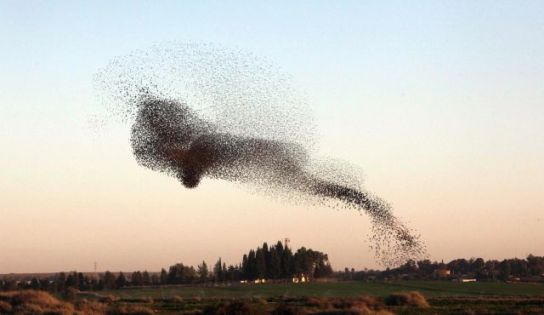The Aerial Antics of Israel's Starlings
Jan 29, 2013

Starlings skies of the Negev. Photo by Eliyahu Hershkovitz
Huge flocks of synchronized starlings that appear like a black cloud returned to Israel last year for the first time in 20 years.
The common starling, first sighted last year at Kibbutz Ein Gev on the eastern shore of the Kinneret, used to fly to Israel from Russia and Eastern Europe until about 20 years ago in mind-boggling flocks numbering some 15 million. But for unknown reasons, the population declined to about a tenth of its former size, and for that reason is no longer seen in Israel.
But now that their numbers are climbing back, they can now be sighted again in Israel, particularly at dusk when the flocks begin their spectacular aerobatic display before retiring for the night.
Dr. Yossi Leshem of Tel Aviv University and the Society for the Protection of Nature in Israel, says, "after spending all day in the fields, the starlings gather for about 20 minutes of amazing aerial antics." The larger flocks create a black cloud that without warning changes direction and form, in a sychronization that is difficult to explain, he adds.
Leshem says the birds' communal behavior reveals something of what he calls its "wisdom." "If it would be every bird for itself, they would be immediately devoured as prey, while in a flock of half a million, they protect each other," he says.
More than likely the flock protects itself in this way from raptors trying to cull individual birds, because the raptor can't zero in on a single starling, Leshem explains.
The airborne community has another advantage vis a vis its natural enemies, Leshem says: "In a split second, the flock that was a flying ball only a moment before changes direction and the burst of wind flips the raptor over on its back," he says.
Read the full article here.



